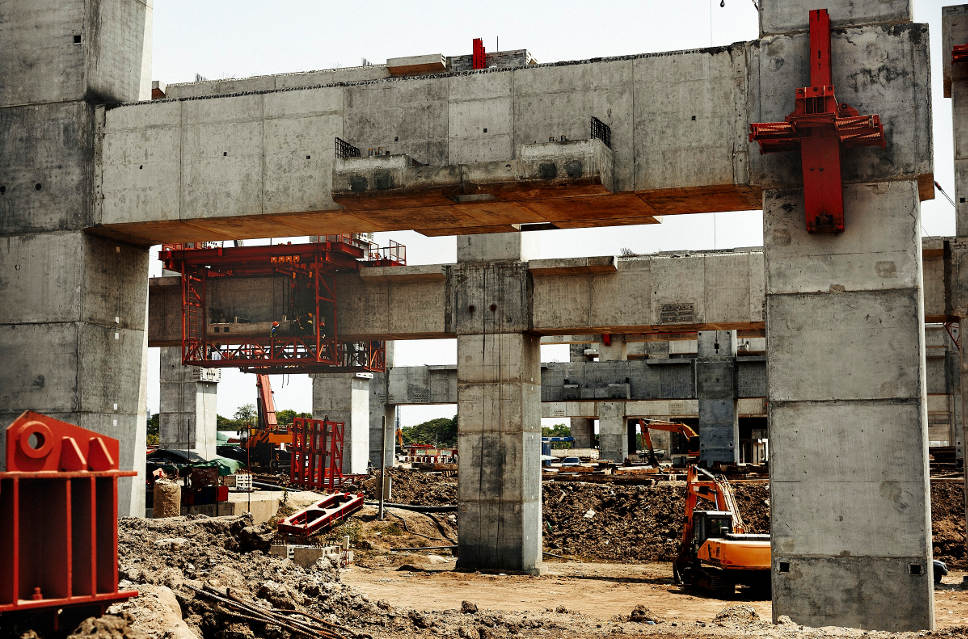Blue Collar Jobs Continue to Expand Across Midwest in March
The moderate pace of expansion of blue collar jobs continued in March, as most of the Rust Belt states added jobs in both manufacturing and construction. This follows the general pattern nationwide.
Wisconsin had the best performance in the month, adding 2,300 construction jobs (1.9 percent) and 2,100 manufacturing jobs (0.4 percent). Ohio also had a good month, adding 1,200 construction jobs (0.6 percent) and 1,500 manufacturing jobs (0.2 percent). Iowa added 1,300 construction jobs (1.8 percent) but only 200 jobs in manufacturing (0.1 percent).
The situation was somewhat weaker in Minnesota, which added 1,500 manufacturing jobs (0.4 percent) but lost 1,000 construction jobs (0.7 percent). Illinois only added 900 manufacturing jobs (0.2 percent) and 600 construction jobs (0.3 percent). Missouri lost manufacturing jobs, with a drop of 600 (0.3 percent), but added 1,400 (1.2 percent) construction jobs.
Looking back over the last year, some states have had a notable uptick in manufacturing job growth. Iowa leads the way with a gain of 10,400 jobs or 4.9 percent of total manufacturing employment. It lost 0.5 percent of its manufacturing jobs between March of 2016 and March of 2017. Illinois also had a big turnaround in the last year adding 18,200 manufacturing jobs in the last year or 3.2 percent of total employment. It had lost 1.4 percent of its manufacturing jobs in the prior 12 months.
Wisconsin is next with a gain of 13,200 jobs or 2.8 percent of its total. That compares to an increase of 0.3 percent from March of 2016 to March of 2017. This is the strongest growth in manufacturing in the state since 2012 when jobs were increasing at more than a 3.0 percent annual rate.
Ohio added 11,600 manufacturing jobs over the last year, an increase of 1.7 percent. This compares to a loss of 0.1 percent of its manufacturing jobs in the year ending March of 2017. By comparison, manufacturing employment had been growing at more than a 2.5 percent rate at the start of 2015.
Michigan saw a substantial slowdown in its rate of manufacturing jobs growth, adding just 3,000 jobs or 0.5 percent of total employment in the last year, compared to a gain of 2.5 percent in the year ended in March of 2017. Indiana has also seen a modest slowing, adding 5,000 jobs over the last year, a gain of 1.0 percent, down from an increase of 1.5 percent in the prior 12 months.
The modest growth in employment levels does not seem to be having much impact on wage growth in most states, which remains modest. The major exception is Indiana, where the average wage of production and nonsupervisory workers in manufacturing has risen by 9.0 percent over the last year. This compares to a 2.8 percent rise in the prior year. These data are erratic at the state level, and this can be driven by a change in the mix of manufacturing employment (i.e., growth in high-wage industries) rather than sharply rising wages in general.
Iowa is a more typical state with a rise in the average hourly wage of just 2.6 percent, just a bit more than inflation, following a rise of 3.9 percent in the prior 12 months. The average hourly wage in Michigan rose just 1.2 percent, continuing a pattern of weak wage growth in manufacturing in the state. Nominal wages rose 1.4 percent in the prior 12 months and actually fell 2.0 percent in the 12 months ending in March of 2016. Manufacturing wages in Michigan have been lagging inflation for most of the last decade. Wage growth has also been notably weak in Wisconsin with the average hourly wage rising just 1.3 percent over the last year, down from a 6.2 percent increase in the prior 12 months.
On the whole, blue collar jobs in the region continue to follow the pattern in the rest of the country. We are seeing modest job growth without any clear evidence of accelerating wage growth.
Construction Full employment Illinois Indiana Industrial Belt Iowa Manufacturing Michigan Minnesota Missouri Ohio Wisconsin

